Managing services efficiently and effectively has become paramount for organisations across industries. However, amidst the rapid technological advancements and shifting business demands, IT service management (ITSM) faces several challenges that can impede its smooth functioning. In this article, we delve into the top three challenges in IT service management and explore how ITIL 4, the latest iteration of the IT Infrastructure Library, addresses these hurdles.
Complexity in Service Delivery:
With the proliferation of IT services and systems, managing the complexity of service delivery has become a daunting task. IT environments often comprise diverse technologies, platforms, and vendors, leading to fragmented processes and disjointed workflows. This complexity not only hampers operational efficiency but also increases the risk of service disruptions and delays in issue resolution.
ITIL 4 addresses this challenge by advocating a holistic approach to service management. It emphasises the importance of end-to-end service delivery and encourages organisations to adopt a service value system (SVS) that integrates people, processes, and technology. By fostering collaboration across different functional areas and promoting standardised practices, ITIL 4 helps streamline service delivery workflows and mitigate the complexities associated with managing diverse IT environments.
Adapting to Changing Business Needs:
In today's dynamic business environment, organisations are under constant pressure to adapt to evolving market trends and customer demands. This often entails frequent changes to IT services and infrastructure to align with business objectives. However, traditional ITSM frameworks struggle to cope with the pace of change, leading to inefficiencies in service delivery and resistance to innovation.
ITIL 4 addresses this challenge by embracing a more agile and flexible approach to service management. It introduces the concept of the service value chain (SVC), which emphasises the iterative and incremental delivery of value to customers. By breaking down silos and promoting cross-functional collaboration, ITIL 4 enables organisations to respond quickly to changing business needs and drive continuous improvement in service delivery.
Managing Complexity in Hybrid IT Environments
With the increasing adoption of cloud computing, DevOps practices, and outsourcing arrangements, IT environments have become increasingly hybrid and heterogeneous. Managing services across these diverse platforms and environments poses significant challenges in terms of interoperability, security, and governance. Traditional ITSM approaches often struggle to provide a unified view of services and resources, leading to inefficiencies and compliance risks.
ITIL 4 addresses this challenge by advocating a more integrated and holistic approach to managing hybrid IT environments. It emphasises the importance of service integration and management (SIAM) principles, which focus on coordinating and synchronising services across multiple suppliers and service providers. By promoting standardised interfaces and interoperability standards, ITIL 4 helps organisations manage the complexity of hybrid IT environments more effectively and ensures seamless service delivery across different platforms and providers.
IT service management faces several challenges in today's fast-paced and dynamic business environment. However, with the advent of ITIL 4, organisations have a powerful framework at their disposal to overcome these hurdles. By embracing principles such as end-to-end service delivery, agility, and integration, ITIL 4 equips organisations with the tools and methodologies needed to navigate the complexities of modern IT environments and deliver value to customers efficiently and effectively.
















